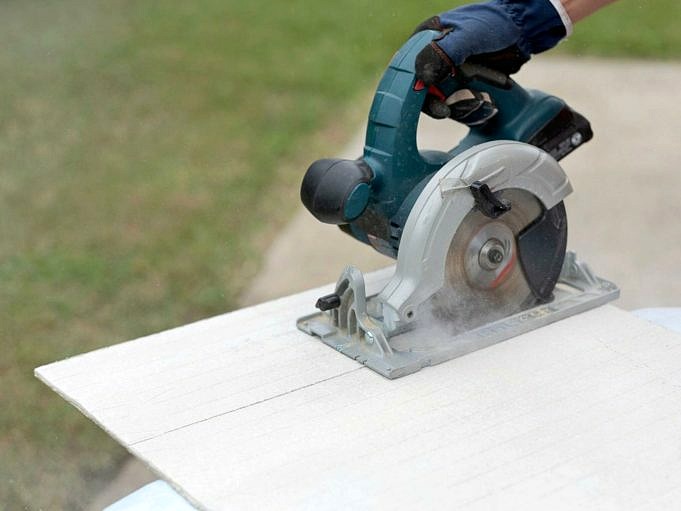HardieBacker is the best-selling cement-based backerboard on the market. It is the best choice for home improvements and construction in wet areas like bathrooms and kitchens, thanks to its lifetime warranty and MoldBlockTM technology.
You can get it in 3×5 cm or 4×20 cm sheets. There are two thicknesses available: HardieBacker 500 (1 cm) and HardieBacker 10 cm. The 500 is used for underfloor and behind walls, while the 1/10 cm is used as countertop underlayment. Both are excellent underlayments for tile, and the 500 can be used to paint or wallpaper.
HardieBacker board is made of 90% Portland cement, ground sand and no paper facing. This is because mildew can feed off of paper. It is also free of asbestos, formaldehyde and gypsum, which is a major advantage over other backing boards.
This PDF specification chart compares HardieBacker to other backing board materials on the market.
HardieBacker board can be cut and worked with with ease using the right tools, even when it is necessary to make difficult circular or angled cuts around corners, pipes, pipes, or showerheads. The 1/10 cm board comes with EZ Grid TM perforated grommes that make it easy to cut and do precise work.
Cutting: Tips, Tools, And Techniques
The score method and snap are the best methods to cut HardieBackerboard (or any cement backing boards) in long straight sections. A special carbide-tipped scoring tool will make it easier, but a general utility knife can also be used.
Simply lay the board flat on the ground and mark your line using a straight edge. Then, use the scoring knife to apply firm pressure to the line. After you have scored the board, put your body weight on it to keep it down. Then, snap the score up to remove it.
The score and punch methods are effective for small angles, circles, and curves. Mark the circle and then score it. Next, score some cross-sections like you would slicing a pizza. Next, use a hammer to mark the circle. Simply punch out the section that you want.
The same process can be used for corners, angles and squares. Simply mark the desired area and then score cross-sections. Finally, use a hammer to break up the area.
This video shows you how to do it correctly.
You can also drill holes along the desired line using a masonry bit, but it is slower and does not produce as precise a cut.
Power Tools For Cutting HardieBacker Board
If you are working indoors, the score and snap method will be your only choice for cutting HardieBackerboard.
You can use power tools as long as you are in an outdoor, well-ventilated area. You don’t want cement board’s silica dust floating around your home.
Wear goggles and respirator protection if you use any of the following power tools.
A circular or jigsaw is best for long straight cuts. A carbide-tipped blade should have as few teeth as possible to ensure the cleanest and easiest cut. The more teeth you have on your saw blade, the more dust it will produce and the more rough the cut. The 4-tooth HardieBlade by Diablo is specifically made for cutting cement board. This 6-tooth, less costly blade is also suitable.
For jigsaws, the same principle applies. Use a carbide, diamond-grit or coarse blade. Move slowly to get the best cut. You’ll use a lot of blades so be prepared to change them often. If you need to make a large square or hole, a jigsaw may be an option.
You can also use an angle grinder with a diamond-impregnated cutting wheel, but this will produce lots of dust. It would be a nightmare to keep a straight line.
If money is not an issue or you plan to cut lots cement board, then a pair electric cement shears such as these Makita are another option. Although the cut is great, it comes at a high price.
There are many options for HardieBacker cement boards to be cut. Take your time and select the right tool for you.
Last but not least, when using power tools, be sure to wear safety gear and work outdoors.



